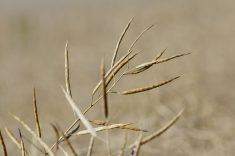One of Canada’s northernmost farming areas has picked up a case of a disease well known to canola growers further south.
Alberta Canola on Wednesday announced the Peace region has reported a case of clubroot in canola, in Big Lakes County, which surrounds much of Lesser Slave Lake in the region’s southeast.
The disease has been well known in central Alberta since the early 2000s and had already been detected in canola fields in Big Lakes’ neighbouring counties to the south and east, including Lesser Slave River, Woodlands and Yellowhead.
Read Also

New opportunities for Canadian goods in Mexico
Agriculture minister’s trip to Mexico sees promotion of Canadian goods like beef and canola, with potential for more partnerships in the future
Alberta Canola said Wednesday it’s working with the Canola Council of Canada and extension partners to “reinforce grower awareness of the clubroot management fundamentals” such as crop rotation and equipment sanitation.
A clubroot information session for local growers is also scheduled for 10 a.m. on Thursday, Aug. 31 at Guy Community Hall. (Guy is about 50 km northwest of High Prairie, on Township Road 760 just east of Highway 49.)
A soil-borne disease of cruciferous crops, clubroot is caused by a fungus-like organism, Plasmodiophora brassicae. There are no known economically feasible controls to get it out of an infested field.
In clubroot-infected canola, swellings or galls appear on roots, cutting off a plant’s water and nutrient supplies so it prematurely ripens and dies. Typical yield losses run around 50 per cent but can run up to nearly 100 per cent in fields under severe clubroot pressure.
“If clubroot has not yet been found in your community, that does not mean it is not present,” Alberta Canola said on its website Wednesday.
“A buildup of clubroot spores eventually leads to visual symptoms, yield loss and reduces the durability of variety resistance.”
To help prevent clubroot spore buildup, canola producers are urged to use clubroot-resistant varieties, and if clubroot is already present in the area, those varieties should be used in a rotation interval of at least three years.
Clubroot-resistant varieties can help reduce disease loss to as low as zero, but the resistance isn’t considered durable when used in short rotations in heavily-infested areas. Fields known to be heavily infested shouldn’t be seeded to canola.
Growers should also scout for clubroot in canola fields — even in fields seeded to resistant varieties.
Growers will also want to follow a crop rotation with at least a three-year interval of canola crops, to reduce pressure from clubroot and other diseases and pests. Volunteer canola should also be controlled in all crops.
Growers are also urged to clean equipment between fields, in order to “minimize soil movement” from field to field, and to reduce tillage and other soil disturbance, so as to cut down soil movement via wind and water.
Clubroot is established in Canada mainly in vegetable-growing regions of Quebec, Ontario, Atlantic Canada and British Columbia. Its first appearance in Canadian canola was in Quebec in 1997, but it took until 2003 to appear on the canola-rich Prairies, near Edmonton.
Cases have since been confirmed in thousands of canola fields elsewhere in Alberta, mainly in central regions and particularly around Edmonton, but also as far south as Medicine Hat, as well as in canola fields in Saskatchewan, Manitoba and Ontario.
Areas with warm soils, high soil moisture and acid soil (pH under 6.5) are known to favour infection and show more severe disease development.
More information on clubroot is available on the Canola Council of Canada’s clubroot website. — AGCanada.com Network












